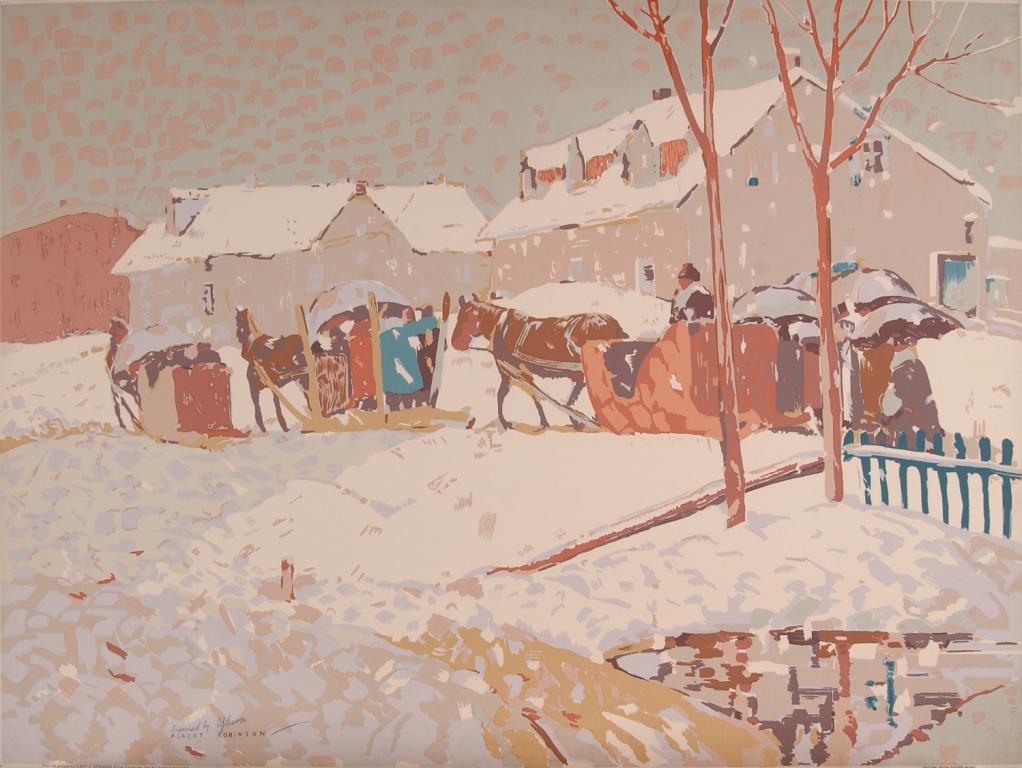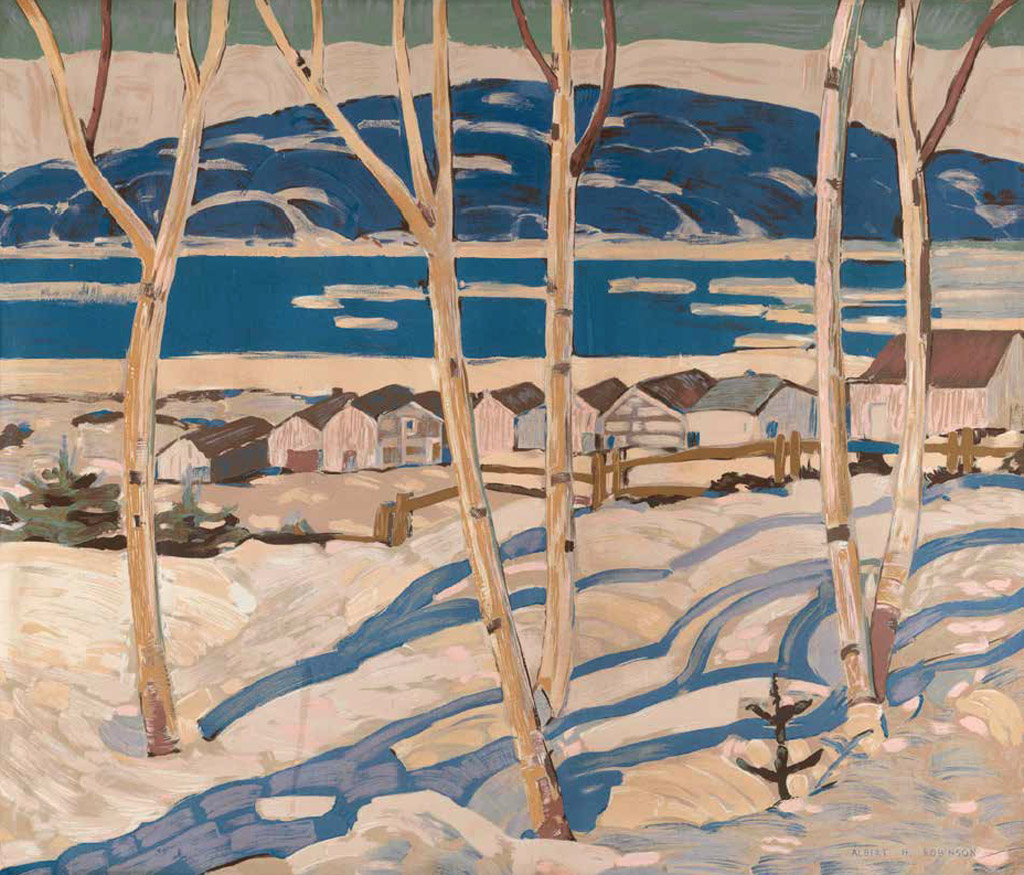Canadian artist Albert Henry Robinson was born in Hamilton, Ontario and displayed a talent for art at an early age. After finishing high school, he began working at the Hamilton Times as an illustrator, where he illustrated scenes from the news as well as being a political cartoonist.
In his spare time he studied at the Hamilton Art School under John S. Gordon. He left for Paris in 1903 and for the first year studied at the Académie Julian under Bourgereau and Baschet, producing a sufficiently high level of work to gain entry into the Ecole des Beaux Arts. Returning to Hamilton, he worked as a studio assistant to Gordon and as a life class instructor at the Hamilton School of Art.
In 1908, Robinson moved to Montreal where he met important artists such as William Brymner, Edmund Dyonnet and Maurice Cullen. Robinson painted scenes in and around Montreal and in 1910, met A.Y. Jackson. They became good friends, traveling to Europe together and sketching in the towns along the St. Lawrence River.
It was during one of these trips to that Robinson did the sketch for his painting ‘Returning From Easter Mass’, in 1922 (National Gallery of Canada). Done at Cacouna, it is perhaps Robinson’s most famous painting. Douglas Buchanan, describing Robinson’s style and subject matter, writes that the link between “that romantic feeling which Marc Aurèle de Suzor-Côté and Clarence Gagnon had for Quebec landscape, and the more decorative but basically naturalistic approach, which A.Y. Jackson has emphasized in recent years, can be traced in the work of A.H. Robinson… Snowbound villages in winter… were the unchanging objects of his affection … The gaily-coloured sleighs drawn by plodding and often blanketed horses Robinson now also took as the motif for his many sketches.”
During his lifetime, Robinson’s solo shows included: The Arts Club, Montreal (1920); Watson Art Galleries (1926); West End Art Gallery, Montreal (1950) and The Art Gallery of Hamilton/National Gallery of Canada (1955). He participated in many group shows including the Royal Canadian Academy; the Ontario Society of Artists; Spring Exhibitions of the Art Association of Montreal; the Group of Seven; the British Empire Exposition, Wembley, England (1925); the Musée du Jeu de Paume, Paris (1927); A Century of Canadian Art, the Tate Gallery, London (1938); The World’s Fair, New York City, (1939); Canadian Art 1760-1943, Yale Univ. Art Gallery (1944) and many others.
He won numerous awards and was a member of the Royal Canadian Academy and the Canadian Group of Painters. He is represented in many important public collections including the London Regional Art Gallery, Ontario; the Art Gallery of Hamilton, Ontario; the Art Gallery of Ontario; the McMichael Collection, the National Gallery of Canada; the Montreal Museum of Fine Arts; the Musée du Québec and the Musée d’Art Moderne, Paris, France.

